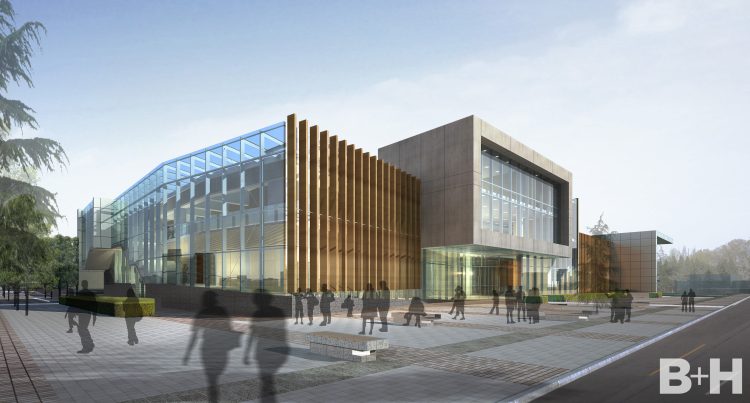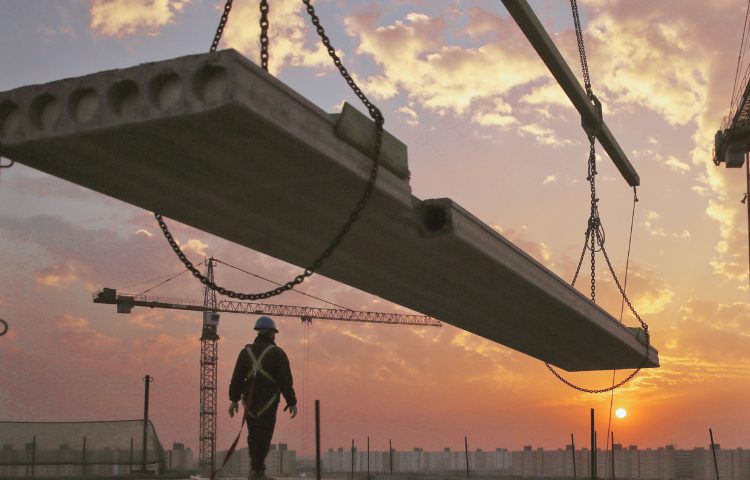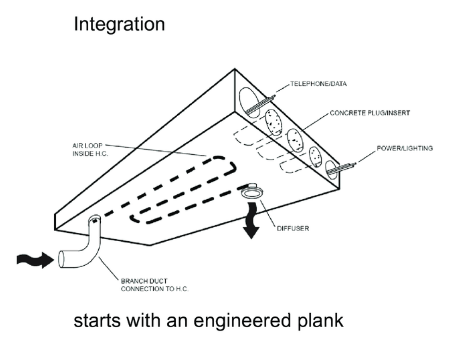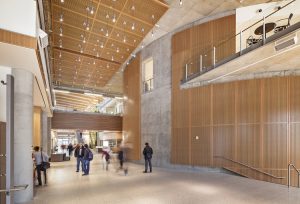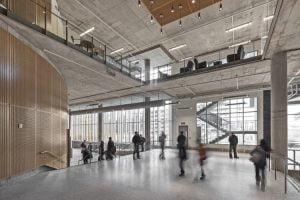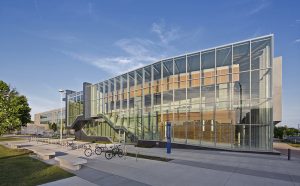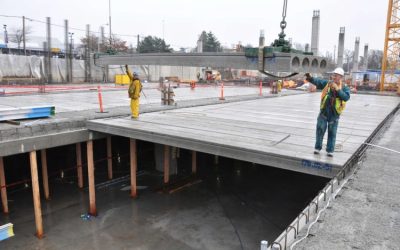Center for Engineering Innovation Utilizes Integrated Thermal Storage Ventilation to Drive High Efficiency
Images courtesy of B+H Architects
The University of Windsor’s 310,000 sq. ft. CEI features construction of recycled materials, a green roof, bio-wall, water recycling, low-energy heating and other sustainability systems including TermoBuild’s Integrated Thermal Storage Ventilation. This collaborative effort has incorporated new products and cutting-edge technologies that help to minimize dependence on expensive energy-consuming HVAC equipment.
Ventilation Considerations in the Design Stage
B+H Architects stated that they wanted to ensure that the ventilation system saved energy while maintaining excellent indoor air quality. Laboratories require significant ventilation which traditionally demands higher energy intensity.
Passive mechanisms are a great source of energy savings but coupling them with an active thermal storage mechanism connect the building HVAC drives even deeper energy efficiency.
TermoBuild’s Integrated Thermal Storage Ventilation solution activates the thermal mass of the concrete building structure to store and release heating and cooling on demand.
Heating Mode: The free heat given off by equipment, occupants, and the sun charge the concrete by radiation directly from the source into the exposed concrete planks, and through direct conduction as the air passes through the concrete cores and deposits heat into the concrete. The conditioned air that is delivered through the concrete Tanks can be cooler than in a conventional all-air system because it heats up on its journey through the concrete to the required interior space.
Cooling Mode: During the summer the fans slowly flush out the building overnight, removing absorbed heat so that air can be delivered through the cores warmer than typically, since the pre-cooled concrete will absorb the heat and provide cool air to the occupants. Both modes provide for significant energy savings.
TermoBuild’s Integrated Thermal Storage Ventilation integrates the floor structure (precast concrete hollow-core planks) with the HVAC air distribution system. Air is cycled through the floor planks to deposit and remove heat as needed. See figures below.
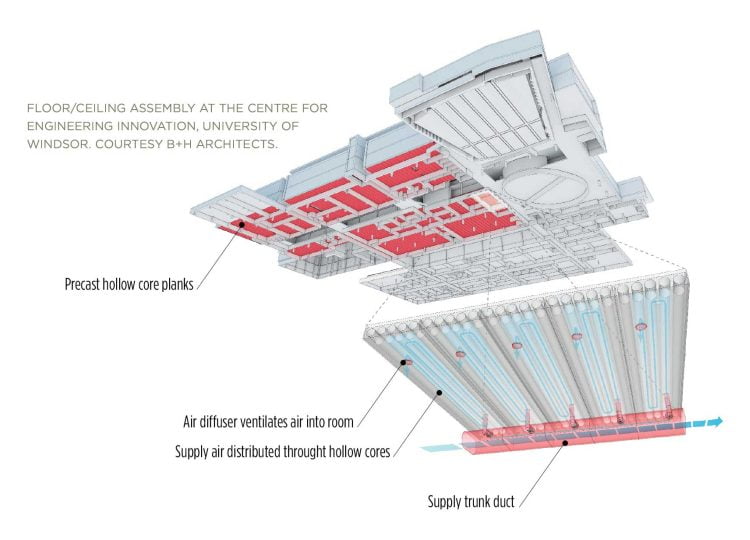
The benefits of the systems include recovery of latent heat as absorbed by the concrete flooring planks as well as obviating the necessity of ductwork and ceilings. This results in capital cost savings through reduced fan sizes (fan power reduction of 30%), eliminated ductwork and eliminated ceilings. The battery effect of the concrete to hold substantial amounts of heat result in significant recued energy consumption (air volume reductions).
Indoor Air Quality
Most of the year, integrated ventilation operates as a dedicated outdoor air system (DOAS) without the capital equipment cost and energy demand of alternatives, bringing fresh air indoors, while maintaining the highest standards of air quality and occupant comfort.
Recirculation of stale air is rarely necessary, preventing sick building syndrome and the potential spread of infectious diseases. Year-round, non-hydronic radiant comfort provides the best occupant experience.
